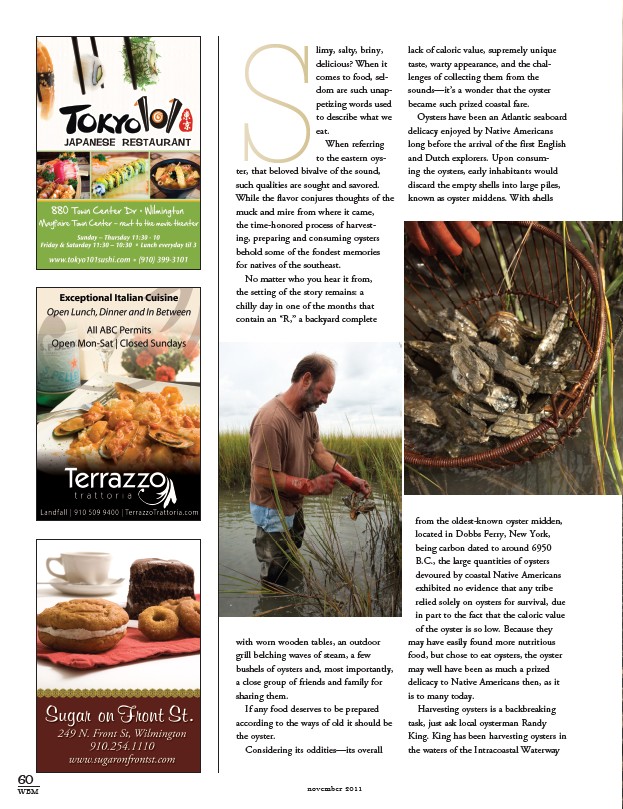
Slimy, salty, briny,
delicious? When it
comes to food, seldom
are such unappetizing
words used
to describe what we
eat.
When referring
to the eastern oyster,
that beloved bivalve of the sound,
such qualities are sought and savored.
While the flavor conjures thoughts of the
muck and mire from where it came,
the time-honored process of harvesting,
preparing and consuming oysters
behold some of the fondest memories
for natives of the southeast.
No matter who you hear it from,
the setting of the story remains: a
chilly day in one of the months that
contain an “R,” a backyard complete
with worn wooden tables, an outdoor
grill belching waves of steam, a few
bushels of oysters and, most importantly,
a close group of friends and family for
sharing them.
If any food deserves to be prepared
according to the ways of old it should be
the oyster.
Considering its oddities—its overall
60
WBM november 2011
lack of caloric value, supremely unique
taste, warty appearance, and the challenges
of collecting them from the
sounds—it’s a wonder that the oyster
became such prized coastal fare.
Oysters have been an Atlantic seaboard
delicacy enjoyed by Native Americans
long before the arrival of the first English
and Dutch explorers. Upon consuming
the oysters, early inhabitants would
discard the empty shells into large piles,
known as oyster middens. With shells
from the oldest-known oyster midden,
located in Dobbs Ferry, New York,
being carbon dated to around 6950
B.C., the large quantities of oysters
devoured by coastal Native Americans
exhibited no evidence that any tribe
relied solely on oysters for survival, due
in part to the fact that the caloric value
of the oyster is so low. Because they
may have easily found more nutritious
food, but chose to eat oysters, the oyster
may well have been as much a prized
delicacy to Native Americans then, as it
is to many today.
Harvesting oysters is a backbreaking
task, just ask local oysterman Randy
King. King has been harvesting oysters in
the waters of the Intracoastal Waterway